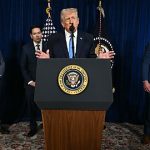
Jeffrey A. Singer
A November 2024 report from the Health Resources and Services Administration projects a shortage of 87,150 full-time equivalent primary care physicians by 2037, and a shortage of 187,130 full-time equivalent physicians across all specialties.
In recent years, several states have revised their medical licensing laws to let residents benefit from the skills and experience of immigrant physicians who trained and practiced abroad. These states grant provisional licenses that allow foreign physicians to work under the supervision of a licensed doctor for a set period, rather than repeating a residency program, as most states require. After passing the same standardized licensing exam that American physicians take, these doctors receive unrestricted licenses to practice.
Tennessee was the first state to enact this reform in 2023. Recently, Texas became the twelfth state to enact such a reform.
These reforms will not eliminate the shortage, but they will definitely help people, especially those in rural and underserved areas, get better access to care. That is, if Immigration and Customs Enforcement (ICE) doesn’t stand in the way.
A news report by Isabel Keane in The Independent contains a video that shows masked ICE agents stopping an immigrant doctor in his car on the way to drop off his child at a day care center in a Portland, OR, suburb. He provided identification to the ICE agents, who grew impatient when he asked them to “wait for three minutes” for his wife to arrive and take the baby from the car. With the baby out of the vehicle, the agents smashed the car’s windows, pulled the man out, and arrested him.
Witnesses described the ICE agents as “heartless” and “unnecessarily violent and inhumane.”
Press reports identify the man as Mahdi Khanbabazadeh, an Iranian. He is married to a US citizen and works as a chiropractic physician. He came to the US on a student visa, which ICE later claimed he overstayed, and he has already applied and been interviewed for a Green Card. The incident drew significant local press attention because it was the first time ICE had arrested someone outside an Oregon school. Until recently, it was against federal policy to make such arrests near schools, houses of worship, or hospitals.
Dr. Khanbabazadeh apparently received his chiropractic education and training in the US. Therefore, he would not face the same barriers to entering practice as immigrant doctors who trained and practiced abroad.
Meanwhile, the patients Dr. K cares for will be disappointed to learn that their doctor is currently being held at the Northwest ICE Processing Center, 143 miles away in Tacoma, WA, separated from his wife and child.
Incidents like this not only traumatize families but also send a chilling message to the very professionals our health system desperately needs. As states take overdue steps to reduce licensing barriers and address a looming physician shortage, harsh immigration enforcement risks undoing that progress. If we truly want to expand access to care—especially in the communities that need it most—we must stop treating immigrant health care providers as threats and start recognizing them as vital contributors.







